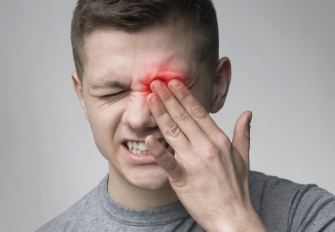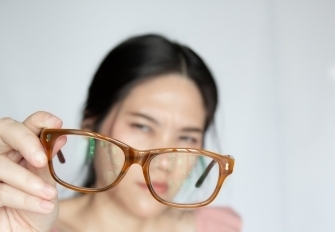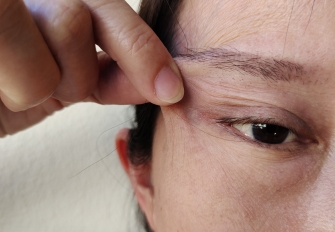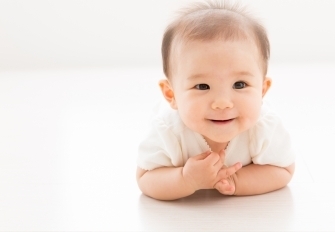Thank you for using our online appointment, the appointment service you have chosen is not yet confirmed. Our customer service will contact you via email or phone within 2 working days to confirm your appointment details.
Ptosis means drooping of the upper eyelid. Ptosis occurs when the muscles that raise the eyelid (levator and Müller's muscles) are not strong enough to do so properly. The possible causes include inborn abnormality, normal aging process, injury, neurological or eyelid diseases. Ptosis operation aims to lift the affected eyelid(s) to improve vision and/or appearance. It can also decrease the chance of amblyopia (lazy eye) in children. Reasons causing Ptosis are as below:
The Operation / Procedure
- The procedure is usually performed under local anaesthesia. General anaesthesia may be required in children and some adult patients.
- The surgical repair may be done through an incision in the skin of the upper eyelid or underneath the eyelid depending on the type of operation.
- Ptosis correction is usually done by shortening the eyelid lifting muscle (levator or Muller’s muscle) to enhance the lifting effect onto the eyelid.
- Alternatively, when the eyelid lifting muscle (levator or Muller’s muscle) is too weak, a frontalis suspension procedure involving the forehead muscle is performed.
- In the frontalis suspension procedure, an artificial material (e.g., silicone rods or other suture material) or an autogenous material (harvested from the patient) is used to connect the eyelid with the forehead muscle such that the eyelid can be elevated.
Before the Operation / Procedure
- Inform your doctor if you have other systemic disease such as hypertension, stroke, heart disease, diabetes or on regular medication(s) (especially anticoagulation medications like Aspirin or Warfarin), traditional Chinese medicine or health foods.
- Fasting as instructed
After the Operation / Procedure
- The incision of the operated eyelid will be covered with soft dressing.
- Sometimes there may be some cotton wool buds left in the upper lid to support the stitches necessary for the operation. They may require removal around one week after operation.
- Tearing or mild eye discharge may occur in the first few days after the procedure, you may wipe them (in the lower lid or cheek) with clean, soft tissue, cotton wool balls or towel.
- Do not rub your eyes
- Apply antibiotic eye ointment or lubricants as prescribed to prevent infection and drying of cornea
- You need to apply an eye pad at nighttime on the operated eye (after application of eye ointment) to prevent the cornea from drying, discomfort and infection. This may need to be continued for some time after operation.
- Do not re-use the eye pad
- Wear buttoned clothes (instead of pullovers) to avoid the clothes contact with the operated eye causing infection
- Leave some light on when you go to toilet at night to avoid falls as you may not be accustomed to the eye pad or blurring after surgery
- Keep the wound clean and dry and avoid eye rubbing
- Keep soap and water out of eyes while showering or bathing
- Avoid swimming and contact sports for a few weeks until advised by doctor
- It is advisable to refrain from washing your hair for 5 to 7 days after operation to avoid infection.
- If severe pain associated with tearing or blurring is present, you should see your doctor immediately or attend nearby accident and emergency department.
Entropion is the inward turning of the eyelid. Most of the cases are due to eyelid tissue involutionary change with age or chronic inflammation or infections like trachoma. A small number of cases are inborn.
In entropion, inverted eyelid and eyelashes may rub on the cornea and the surface of eyeball. This may result in itchiness, discomfort, redness, sand-in-eye feeling, tearing, light sensitivity or pain. In severe cases there may be corneal abrasion, infection, scarring, blurring of vision and even end up in severe visual loss. Most of the time surgery may be needed for full correction of entropion. For entropion due to chronic infection or inflammation, such should be treated with medication before surgical procedure. For mild cases, medication such as lubricant can be used for symptomatic relief if patient refuses surgery. Reasons causing Entropion are as below:
The Operation / Procedure
- The operation is usually performed under local anaesthesia. Anaesthetic agent will be injected at the operation site and then doctor will proceed to correct the lid entropion. Patient will remain awake during the whole procedure. In special situations, general anaesthesia may be required for example if the operation nature is complex, or the patient is uncooperative.
- For severe entropion due to chronic eyelid infection or inflammation, additional surgical procedures such as the grafting of one’s hard palate tissue to the lid or removal of redundant skin etc may be needed.
Before the Operation / Procedure
- Inform doctor if you have other systemic disease such as hypertension, stroke, heart disease, diabetes or you are taking `blood thinning` medication like Aspirin or Warfarin, traditional Chinese medicine, or health supplements on a regular basis.
After the Operation / Procedure
- The success rate of entropion correction is high while the complication rate is low. However, complications such as bleeding, infection, scarring and persistent swelling may sometime occur.
- Occasionally there may be over correction, under-correction or the corrected entropion may recur. Another entropion correction surgery may be necessary then.
Follow up
- You must follow instructions strictly on applying medication and keep the schedule for follow up.
- If you have any excessive bleeding, severe pain, fever, or signs of wound infection such as redness, swelling or large amounts of foul-smelling discharge from the wound, see your doctor immediately or attend any nearby Accident and Emergency Department.
Introduction
A pterygium is a benign wedge-shaped fibrovascular growth of the conjunctiva that can enlarge & extend onto the cornea. The exact cause of the disease is uncertain. It may be related to prolonged UV light exposure. There may be no symptoms in earlier cases. In more severe disease, one may experience redness, inflammation, foreign body sensation in the eyes and blurring of vision.
Indication
Mild pterygium may be left untreated. Tear supplements for lubrication may be used for symptomatic relief. Surgical removal may be needed in the following situations:
- Pterygium blocking / blurring vision
- Persistent significant or severe foreign body sensation, inflammation, or irritation
- Significant astigmatism as a result of the pterygium
- Pterygium limiting ocular movements
The Operation / Procedure
Pterygium removal is usually performed under local anaesthesia as a day case procedure. The pterygium is excised, and adjunctive procedures may be performed to prevent recurrence of pterygium:
- Conjunctival autograft (CA), harvested from another portion of the conjunctiva in the same or fellow eye is used to cover the defect. The CA can usually be fixed by using absorbable sutures or tissue adhesive fibrin glue.
- Adjunctive use of anti-metabolite agents
Before the Operation / Procedure
- Inform your doctor if you have any other systemic conditions such as hypertension, stroke, heart disease, diabetes or taking any medications (especially blood thinners such as aspirin or warfarin), traditional Chinese medicine or health supplements on a regular basis.
- If needed, fasting as instructed by healthcare professionals.
After the Operation / Procedure
- The eye is usually patched with dressing overnight
- Use eye drops or ointment as prescribed by your doctor
- Do not rub your eyes
- Avoid contact sports and refrain from washing your hair in the first week after the operation, and to wear clothing with buttons (instead of pullovers) to avoid inadvertent contact with any dirty water, foreign body, or trauma to the operated eye.
- To avoid any trips or falls during nocturnal toilet visits, it is advisable to leave some night light on.
Follow up
- The wound will heal over time
- Follow strictly on the medication instructions and to attend review as scheduled
- Wear a hat or UV-blocking glasses outdoors to minimize irritation from sun light and risks of pterygium recurrence














